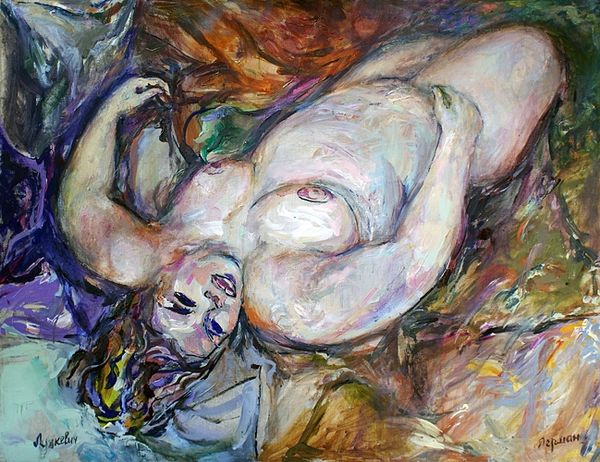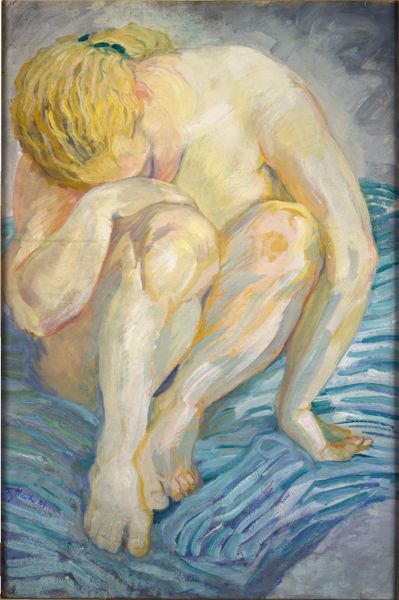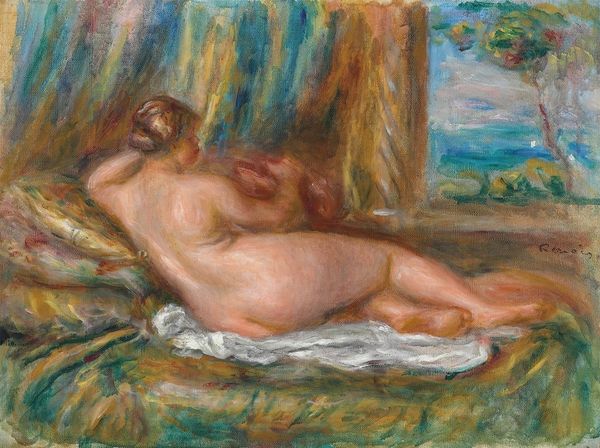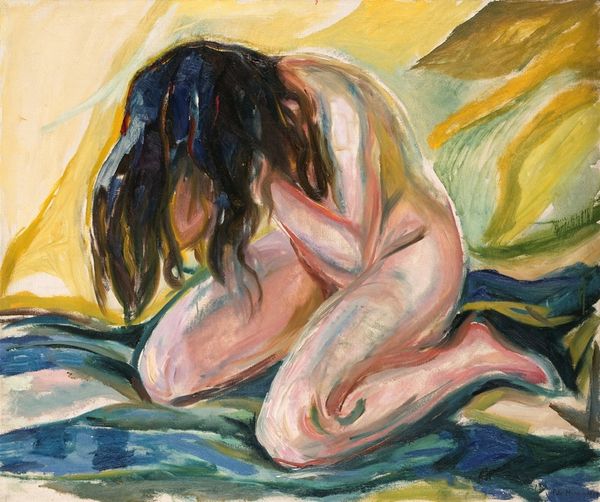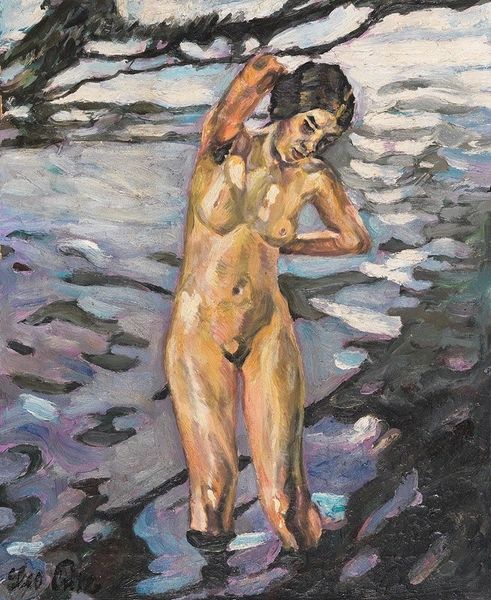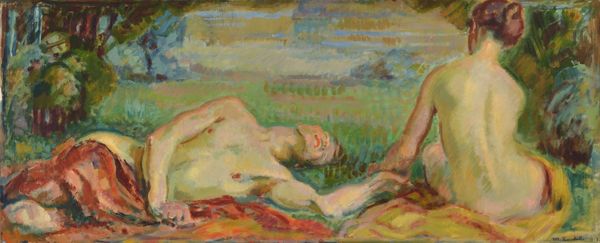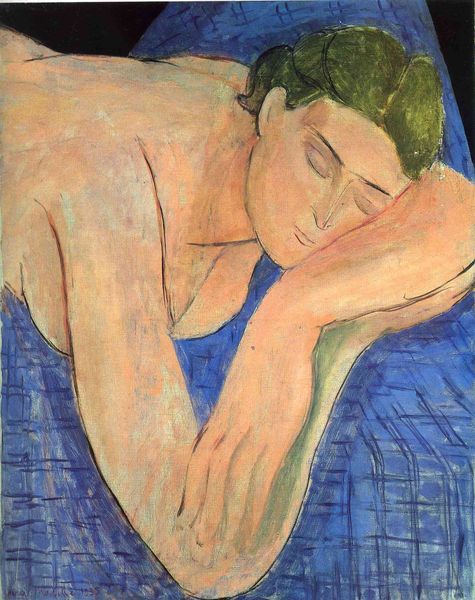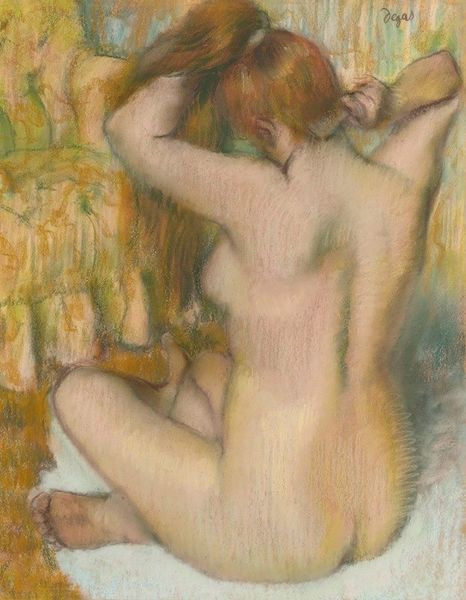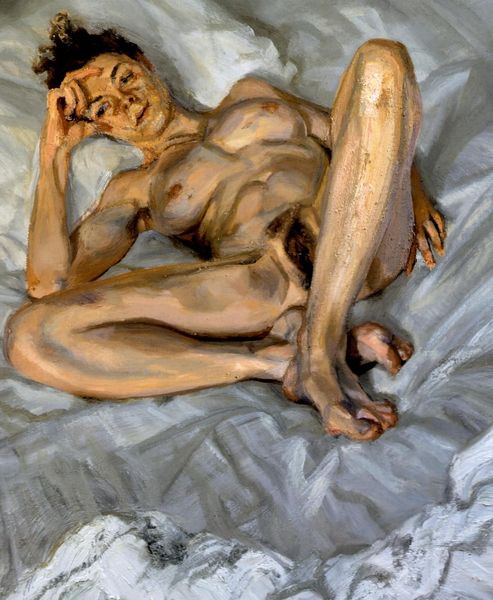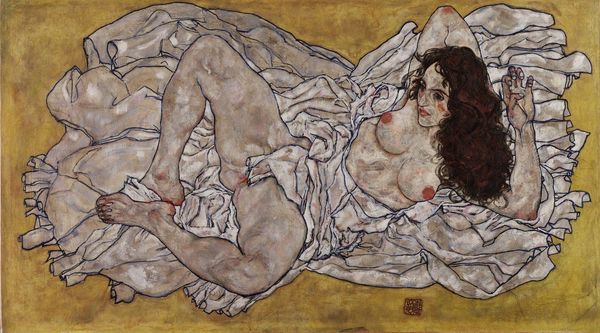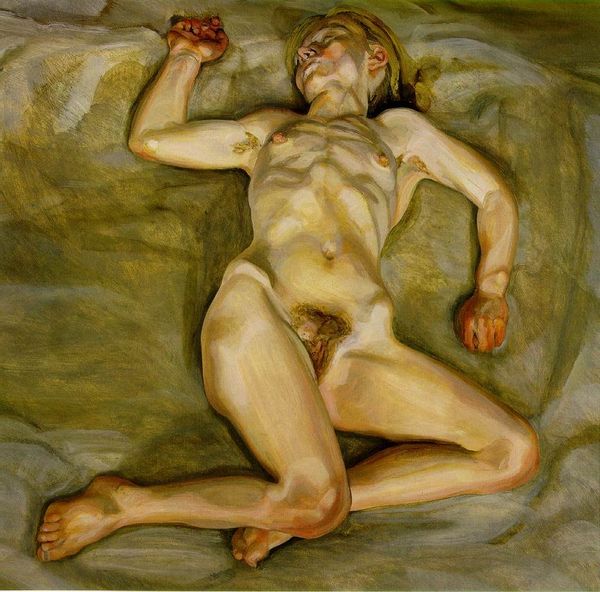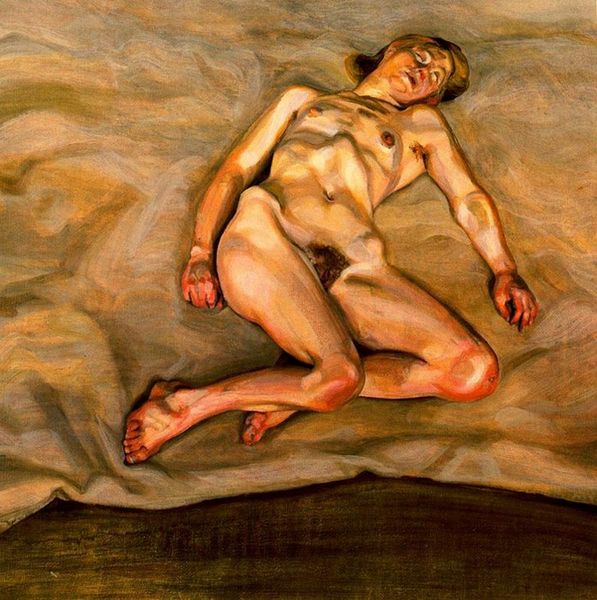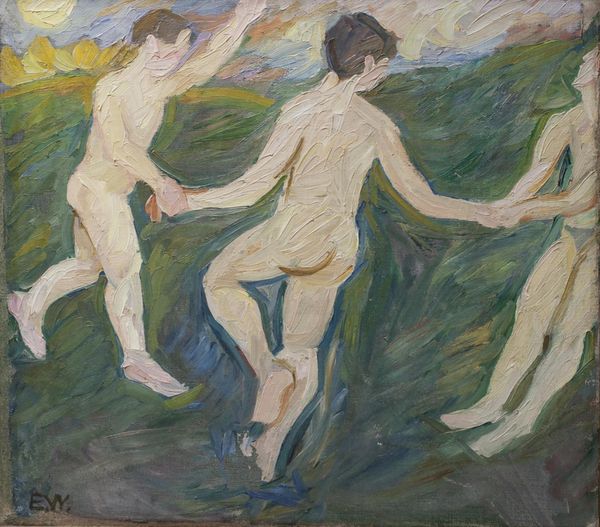
Copyright: Public Domain: Artvee
Editor: This is “The Embrace” by Egon Schiele, painted in 1917 using oil paints. The intertwined figures almost feel sculpted from the very canvas, don't they? What strikes you most about it? Curator: It's fascinating how Schiele used the oil paint itself to convey a sense of raw, physical connection. Look at the application, thick and almost violently applied in places. This is not just about depicting a scene; it's about the act of *making* and how that process infuses the work with meaning. Editor: So the materiality contributes to the intimacy? Curator: Exactly! The roughly textured paint echoes the feeling of skin on skin, while the jagged lines forming the bedding point to its mass-produced availability to consumers; the frills mimic fine linen, made affordable and readily available, speaking volumes about class and the democratization of desire at the time. The very production of the materials adds a new layer. Does that connection of artistic execution and consumerism change how you perceive it? Editor: It does! It makes me think about how even the most intimate moments are, in a way, shaped by larger economic forces. Curator: And that is central to understanding Schiele’s intent. He's not just showing us bodies; he's showing us how those bodies exist within, and are formed by, a specific material world. The choice of oil paint, its cost, availability, the labor involved – all of it is crucial to interpreting the work. Editor: I'll never look at an Impressionist painting the same way again. This has given me such a richer appreciation. Curator: Exactly! By acknowledging labor, consumerism, and manufacture, we understand art as a physical embodiment of those conditions, and deepen our view.
Comments
No comments
Be the first to comment and join the conversation on the ultimate creative platform.
